A guide to Brand Strategy speak
Like all areas of consulting, Brand Strategy has a language of its own. Whilst often confusing to clients, the terms commonly used by brand strategists should be understood by all professing to provide this important branding service. We’ve compiled a list including some lighter-hearted language to set you up to speak like a pro.
Baked-in brands.
Those brands with an intrinsic value to their customers built into the very heart of their brand which as a result don’t require traditional advertising. The opposite is brands who say one thing and deliver another.
Blank Brand Canvas.
A previously unidentified and un-utilized brand brand communication opportunity, ie. Your out of office reply is a blank brand canvas - if i ran a juice co. mine would say: “out picking berries for our new summer berry smoothie.”
Bold Brand Gesture.
A brand experience driven from your brand strategy making a particularly memorable impression through a combination of brand relevance and originality.
Brand Acceleration.
The increased velocity of a brand capturing market-share rapidly - typically by outperforming their competition through innovation or next level audience relevance. For instance, the Starbucks brand is 50 years old, Maxwell House is 150 - enough said.
Brand Architecture.
A considered structure of a brand and all of it’s sub brands that provides it with the optimal positioning of it’s portfolio to market. For instance Kellog’s is an American food business where the masterbrand imbues layers of positive meaning across it’s cereal and biscuit product brands that also have their own, specific brand positioning.
Brand Essence.
An overarching thought that sits at the heart of a brand and provides clear internal brand direction to the business.
Brand Mapping.
Visualisation of the brands that an person consciously or subconsciously chooses to reflect themselves.
Brand Messaging.
Key messages consciously identified as being most important to the success of the brand, and crafted using the brand voice to best connect with their intended audience.
Brand Personality.
The defined personality of a brand that directs the style in which it communicates outwardly to market through tone of voice, messaging and visual language. Brand personality is a key component of brief for brand identity, advertising and marketing campaigns. For consumer facing brands, the brand personality can also direct the type of people employed to interface directly with customers.
Brand Values.
Brand values are defined for internal audiences to guide the way we behave by establishing a shared value set.
Brand Voice.
Just as each brand has it’s own unique persona, so-too should it have a unique tone of voice that directs the language, attitude and personality of the way it communicates through spoken and written word.
Brandticipation.
The creation of high anticipation for an upcoming product release or brand announcement. Apple is a master of brandticipation, with brand fans regularly camping-out overnight to be first in line to secure a new iPhone/watch/etc.
Challenger Brands.
Often new entrants to a category, Challenger brands seek to disrupt the category leaders by innovating their approach to market. Challenger brands are usually built upon a new insight connecting with a shift in consumer mind-set, but can also include new technology, or simply a fresh player in a market of stale incumbent brands.
Consideration Set.
The shortlist of brands a buyer (consumer or business) is considering for a future transaction. For all brands to acquire new customers they must first be included in their audiences consideration set. Over the last 20 years consideration sets have grown from an average of three brands to 12 or more thanks to the Internet.
Differentiated Brand Value Proposition.
A statement that clearly and simply communicates how a brand is both differentiated from it’s competitors and highly valuable to its target audience.
Disruptive Branding.
A paradigm busting mind-set providing a competitive advantage to any business not locked-into a straight jacket way of thinking, often shared by the rest of their category.
Emotionomics.
The use of emotional connection through brand strategy and brand image to build commercially successful brands.
Farmwashing.
Derisive term for big food companies who attempt to give the brand image of their mass-produced fare a dollop of fresh-farmed, country authenticity.
Fighter Brands.
High risk, high reward brand strategy to knock-out cut-price competition and protect a premium market positioning.
Global Blanding.
When a brand loses clarity and confidence in what makes it unique and tries to appeal to different audiences with different promises. This can seem like a sensible risk mitigation strategy (especially to for big corporates) but almost always leads to evaporating brand engagement and death by a thousand bland cuts.
Greenwashing.
Re-branding old, often inferior products as environmentally friendly in an attempt to confuse/convince the audience.
Hyperlocal.
Brands of any size that customise their offer & tailor their communications to individual & unique markets.
Masterchef Effect.
The popularity of foodie TV programs is positively impacting the health of food brands across the spectrum.
Mom & Popism.
Individual micro businesses (often retail) that creates a unique collective community.
Multiplicity.
Describes the many layers and dimension of meaning brands need to connect.
Nudevertising.
When supermodels take it all off in support of a cause (or for a pay cheque).
Review Revolution.
Social media provides a real-time snapshot of what people are thinking, feeling & reviewing around the world becoming a new and powerful influencer of consumer behavior (for better or worse).
Satisficing.
Sacrificing brand richness to get broad stakeholder approval - the quickest way to bland your brand and corporate image.
Simplexity.
The answer to the challenges of Multiplicity - Simple solutions to complex brand problems.
Tryvertising.
A new breed of product placement in the real world, introducing your goods and services into the daily lives of potential customers in a relevant way.
Word of Mouse.
Online reviews have overtaken word-of-mouth as the most powerful way buyers of products and services search for their best options.

